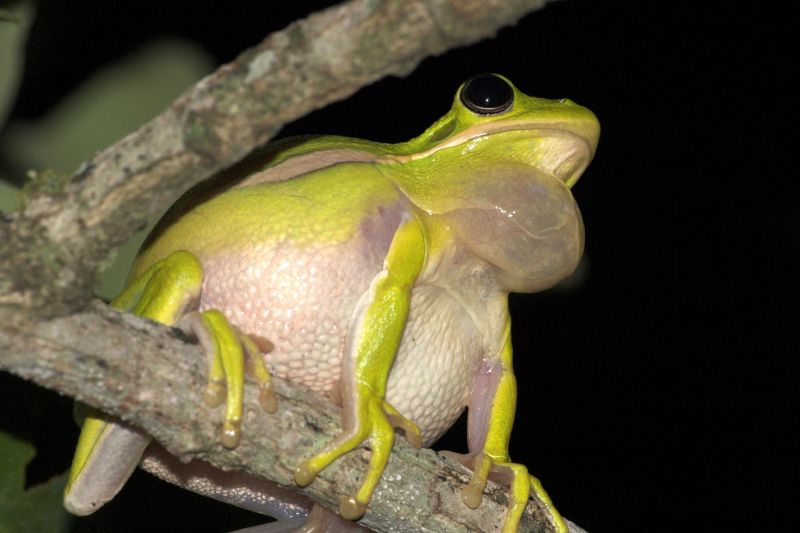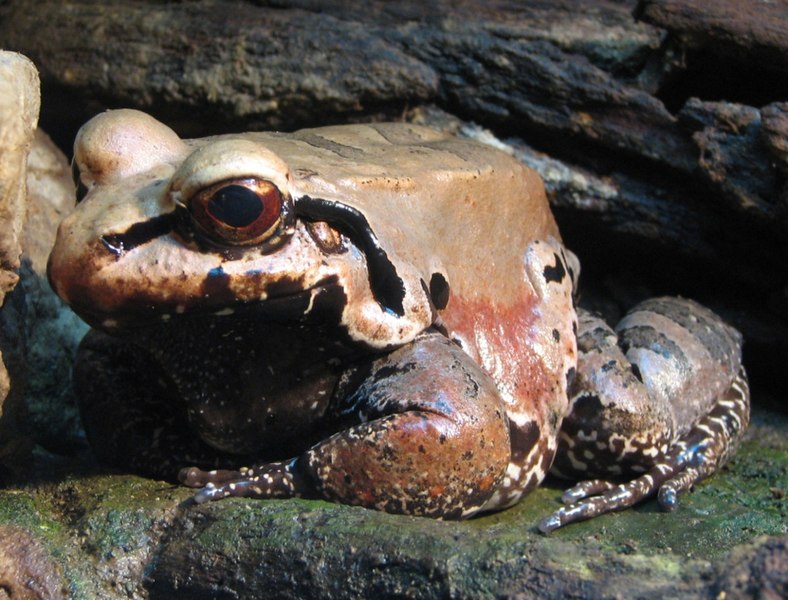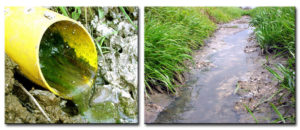 In Part I of this article I wrote about the huge numbers of Spotted Salamanders, Spring Peepers, Tiger Salamanders, Wood Frogs and other amphibians that are right now (March/April, 2010) approaching and entering their breeding ponds. Today I’ll highlight some important programs that you can become involved in if you wish to observe and help protect this wonderful yearly phenomenon. Read More »
In Part I of this article I wrote about the huge numbers of Spotted Salamanders, Spring Peepers, Tiger Salamanders, Wood Frogs and other amphibians that are right now (March/April, 2010) approaching and entering their breeding ponds. Today I’ll highlight some important programs that you can become involved in if you wish to observe and help protect this wonderful yearly phenomenon. Read More »
Tag Archives: Amphibian Reproduction
Feed SubscriptionBreeding the Great Crested Newt, Triturus cristatus – Part 2
Male Great Crested Newts undergo an amazing change in appearance during the breeding season. In Part I of this article I introduced the natural history of this most beautiful newt, and discussed how to bring it into breeding condition. I’ll cover breeding details and raising the larvae here.
Courtship and Egg Deposition
Breeding male newts tend to fight and, although severe damage is rarely inflicted, less dominant animals may become stressed and cease feeding. Courting males position themselves near females and appear to direct pheromones towards them with their tails. Females thus stimulated follow the males, push against their tails, and eventually pick up the spermatophore that the male has dropped.
Several hundred eggs are laid, each being individually attached to an aquatic plant. Females use their rear legs to bend a plant leaf around each egg – quite an ordeal, and well-worth watching!
Adults may consume eggs and so should be removed from the aquarium after egg-laying has been completed. If prevented from returning to land after breeding, adult crested newts usually become quite stressed, thrashing about wildly. Some subspecies, however, can be habituated to a more-or-less permanent aquatic existence.
Raising the Larvae
Crested Newt larvae generally hatch within a month and transform into the terrestrial phase within 3 months, at which point they average 2.4 inches in length.
The larvae can be raised on chopped live blackworms, brine shrimp, daphnia and similar foods; new metamorphs can be offered 10 day old crickets, blackworms, termites and tiny sow bugs. Sexual maturity occurs in approximately two years, at which time they will re-enter water to breed.
An Even More Flamboyant Relative
A close relative, Triturus vittatus ophryticus develops an incredibly high crest that starts at the nose area and ends at the tail. This species is now showing up in the pet trade, and can be bred in a similar manner to the Crested Newt.
Further Reading
Please see a book I’ve written, Newts and Salamanders, for more on the care and natural history of Crested Newts and their relatives.
You can learn more about the natural history of each newt in the genus Triturus here.
Larval Crested Newt image referenced from wikipedia and originally posted by Piet Spaans
Research Note – Amazing Parental Care Supplied by Mountain Chicken Frogs
In the late 1980’s I was privileged to breed the now rarely-seen Smoky Jungle Frog, Leptodactylus pentadactylus, a large (8 inch snout-vent length) Latin American native that constructs foam nests on  land. In the wild, rain washes the tadpoles into a nearby pool, where they develop in normal frog fashion…following suit, I successfully reared a number in water. I subsequently learned that some frog nests are placed far from the water’s edge, and that the tadpoles therein develop entirely on land. But what did they eat…the nest’s foam, perhaps? There were theories, but no answers.
land. In the wild, rain washes the tadpoles into a nearby pool, where they develop in normal frog fashion…following suit, I successfully reared a number in water. I subsequently learned that some frog nests are placed far from the water’s edge, and that the tadpoles therein develop entirely on land. But what did they eat…the nest’s foam, perhaps? There were theories, but no answers.
Subterranean Frog Nests
Herpetologists working with the closely related Mountain Chicken Frog (L. fallax) at the Durrell Wildlife Conservation Trust have recently solved the riddle – and captured the bizarre event on film. Mountain Chicken Frogs, highly endangered and limited to Dominica, St. Kits, Martinique and a few neighboring islands, lay their eggs in foam nests underground, and the tadpoles develop without ever seeing water.
The startling footage taken by the researchers, shows scores of tadpoles gorging on unfertilized eggs produced by their mother. In sharp contrast to certain more “civilized” oophagus (egg-eating) poison frog tadpoles, the chicken frog larvae do not wait until the eggs are actually deposited, but rather swarm about the female’s cloaca, eating ravenously as the eggs emerge. It’s quite a scene!
A Taxing Time for Mom
 Subsequent research has revealed that the harried mother uses her rear legs in an attempt to re-distribute the unusual food, and perhaps to give all of her gluttonous progeny a chance to feed. She has her work cut out for her…the 25 to 50 tadpoles that she rears require 10,000 to 25,000 unfertilized eggs to see them through to metamorphosis!
Subsequent research has revealed that the harried mother uses her rear legs in an attempt to re-distribute the unusual food, and perhaps to give all of her gluttonous progeny a chance to feed. She has her work cut out for her…the 25 to 50 tadpoles that she rears require 10,000 to 25,000 unfertilized eggs to see them through to metamorphosis!
Further Reading
Frogs break all the rules when it comes to reproductive behavior, constantly surprising even the most seasoned herpetologists. To read about tadpoles that “petition” their mother for food, please see my article Begging Behavior Among Strawberry Poison Frog Tadpoles.
Smoky Jungle Frog image referenced from wikipedia and originally posted by Ltshears
Leptodactylus fallax image referenced from wikipedia and originally posted by TimVickers
Chemicals (pesticides, Atrazine, gonadotrophin) and Their Effects on Frog and Fish Sexuality and Reproduction
 Amphibians and fish are highly susceptible to even minute amounts of foreign chemicals in their habitats. As such, their current population declines should serve as an important “early warning signal”, forecasting problems that will eventually affect other animals and ourselves.
Amphibians and fish are highly susceptible to even minute amounts of foreign chemicals in their habitats. As such, their current population declines should serve as an important “early warning signal”, forecasting problems that will eventually affect other animals and ourselves.
An odd twist to this sensitivity issue among frogs is that an injection of gonadotrophin, a human growth hormone, brings many species into breeding condition. This discovery was a boon to captive breeding programs, as most frogs require the duplication of certain environmental cues – dry or wet seasons, for example – if they are to breed normally. However, things can easily go wrong – while using hormones to stimulate breeding, I and others have noted that some male frogs began to develop organs resembling ovaries.
Now, male frogs in the wild are being found to have inter-sex characteristics, including immature eggs within the testes. A recent Harvard University study found such characteristics in 21% of the male green frogs, Rana clamitans, in ponds in suburban Connecticut. It seemed that the affected frogs were more common in suburban than agricultural areas, but other studies have yielded opposite results. Similar reproductive system changes have been documented among catfish in Africa, sturgeon in the Mississippi and other fishes.
 Pesticides, the herbicide Atrazine, and other chemicals commonly found in water and soil have been shown to affect sex hormone development, but much more research needs to be done.
Pesticides, the herbicide Atrazine, and other chemicals commonly found in water and soil have been shown to affect sex hormone development, but much more research needs to be done.
There is a great deal of ongoing research in this important area – please read any related articles that you may come across and write in to share new information.
An article describing research into the effects of Atrazine on amphibians is posted at:http://www.pubmedcentral.nih.gov/articlerender.fcgi?artid=1247376
 That Reptile Blog – Reptile, Amphibian and Exotic Pet Care and Information
That Reptile Blog – Reptile, Amphibian and Exotic Pet Care and Information
